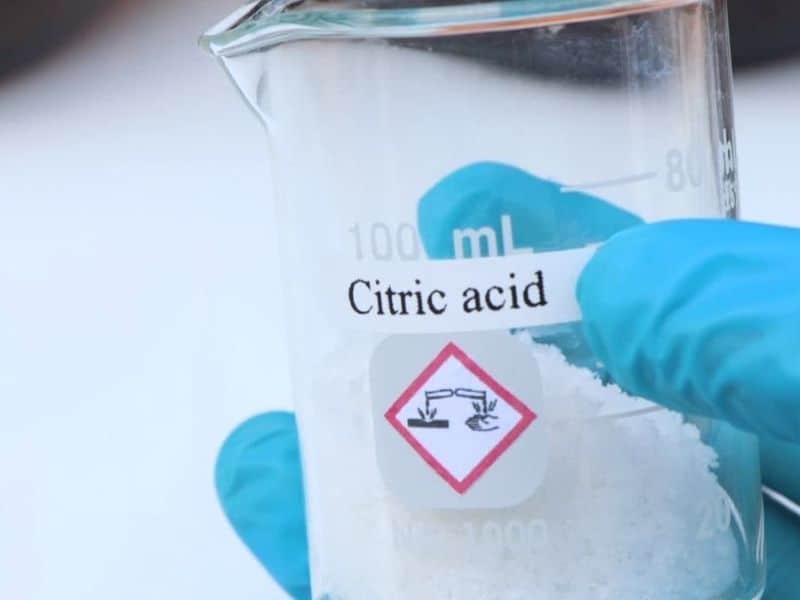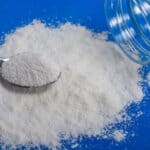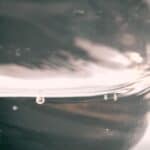Citric acid is a versatile ingredient found in citrus fruits, and it is a popular ingredient used in making various types of soap. We are going to explore how to use citric acid in soap making for both cold process and melt and pour methods.
Dissolve the citric acid powder in twice its weight of room temperature water, or the water that will be used for the lye. Thoroughly mix the solution and add it to the oils. Adding citric acid in soap making helps adjust pH, soften water, enhance lather, and create skin-friendly soap.
Once the citric acid solution is added to the oils, continue with your soap making process as usual. For cold process soap, combine the oils and lye, reach trace, and pour the mixture into a mold. For melt and pour soap, mix the citric acid solution into the melted soap base, ensuring even distribution.
Remember to follow safety precautions when handling citric acid, and explore alternatives if needed, to create the perfect soap for you and your loved ones.
Let’s take a closer look at how to use citric acid in soap making below.
Using Citric Acid in Cold Process Soap
When to Add Citric Acid
Timing is crucial when using citric acid in cold process soap making. First, create a citric acid solution by mixing it with distilled water.
Add the citric acid water solution to your soap mixture when combining the oils and lye, or just after, but before you reach trace. This helps ensure even distribution and prevents the citric acid from interfering with the saponification process.
Alternatively, you can add a small amount of citric acid directly to the lye water before adding it to the soap mixture. This is a good option if you plan on using several colors or fragrances in your soap.
Calculating the Right Amount
To determine the appropriate citric acid amount, consider the total oil weight in your soap recipe. Use 1% to 3% citric acid by weight based on your desired soap hardness and lather.
For example, if your soap contains 1000 grams of oils, use 10 to 30 grams of citric acid. Keep in mind that a higher citric acid percentage results in a harder soap with increased lather.
Mixing and Incorporating Citric Acid
To dissolve the citric acid, gradually add it to a small amount of distilled water, stirring until fully dissolved. The ideal ratio is 1 part citric acid to 2 parts water. Pour the citric acid solution into your soap mixture while blending with a stick blender.
Continue mixing until you reach trace, then add any colorants, fragrances, or exfoliants as desired. Pour the mixture into your soap mold and let it cure according to your recipe’s recommended time frame.
Using Citric Acid in Melt and Pour Soap
Choosing a Soap Base
Select a melt and pour soap base that suits your preferences, such as glycerin, shea butter, or goat’s milk. To ensure compatibility with citric acid, check the manufacturer’s guidelines or test a small batch before creating a full-sized soap.
Adding Citric Acid
For melt and pour soap, add 0.5% to 2% citric acid by weight based on your preferred soap hardness and lather.
Start with a lower percentage and adjust according to your needs. For example, if your soap base weighs 500 grams, use 2.5 to 10 grams of citric acid.
Mixing and Pouring
Melt the soap base using a double boiler or in short bursts in the microwave, stirring between each burst. Once fully melted, gradually add the citric acid while stirring continuously to ensure even distribution.
If desired, mix in colorants, fragrances, or exfoliants at this stage. Pour the mixture into your chosen soap mold, and let it cool and harden.
This typically takes 2 to 4 hours, but check the manufacturer’s recommendations for specific cooling times. Once set, remove the soap from the mold, and enjoy your citric acid-infused soap!
Benefits of Citric Acid in Soap
pH Level Adjustment
Citric acid effectively adjusts the pH level of your soap, which can range from 9 to 10 without adjustment. By adding citric acid, you can lower the pH closer to the skin’s natural pH of 5.5, creating a milder, more skin-friendly soap that is less likely to cause irritation.
Water Softening
Citric acid acts as a chelating agent, binding to minerals in hard water, and softening it. Hard water contains minerals like calcium and magnesium that can inhibit lather and reduce soap’s cleaning efficacy.
By incorporating citric acid, your soap will work more efficiently, producing a richer lather even in hard water conditions.
Enhancing Lather
Adding citric acid to your soap recipe can improve the lather, making it creamier and more luxurious.
This is particularly beneficial for cold process soaps where the natural glycerin content may produce thinner lather. With citric acid, you can achieve a more satisfying and enjoyable bathing experience.
Citric Acid Alternatives
Lactic Acid
Lactic acid, derived from milk or fermented plant-based sources like sugar beets, can be used as an alternative to citric acid in soap making. It offers similar pH balancing and water softening benefits, while also providing additional moisturizing properties due to its humectant nature.
Sodium Lactate
Sodium lactate, another citric acid alternative, can be used in soap making. A salt derived from lactic acid, sodium lactate is typically added at a rate of 1 to 3% of your total oil weight to harden soap and improve its longevity.
It can help adjust pH levels and enhance lather, but it may not be as effective as citric acid in softening hard water.
Vinegar
Vinegar, especially apple cider vinegar, can be used as a citric acid substitute in soap making. It can help adjust the pH level and soften water when added at a rate of 1 to 2 tablespoons per pound of soap. However, vinegar’s odor may be noticeable in the finished soap.
To counteract the vinegar smell, use fragrances or essential oils in your recipe. Keep in mind that vinegar may not be as effective in enhancing lather as citric acid or other alternatives.
Troubleshooting Common Citric Acid Issues
Citric Acid Clumping
Citric acid can clump when exposed to moisture. To prevent clumping, ensure your workspace is dry and avoid direct contact with steam or water. If clumping occurs, break apart the citric acid with a fork or sieve it through a fine-mesh strainer before adding it to your recipe.
Incomplete pH Adjustment
If your soap’s pH level remains too high after adding citric acid, it could be due to insufficient citric acid or incomplete mixing. Reassess the amount of citric acid used and make sure it’s fully dissolved before adding it to your soap mixture. Mix thoroughly to ensure even distribution.
Uneven Distribution
Uneven distribution of citric acid in your soap can lead to inconsistent pH levels and lather. To avoid this, mix the citric acid solution thoroughly into your soap mixture using a stick blender or a whisk. Ensure all ingredients are evenly distributed before pouring into your mold.
Citric Acid Safety Precautions
Handling Citric Acid
Citric acid is a mild irritant and can cause discomfort if it comes into contact with your skin, eyes, or respiratory system. When handling citric acid, wear protective gloves, goggles, and a dust mask to minimize exposure. Work in a well-ventilated area to reduce the risk of inhaling citric acid particles.
Storing Citric Acid
Store citric acid in a cool, dry place away from moisture and heat. Keep it in an airtight container to prevent clumping and ensure its longevity. Keep citric acid out of reach of children and pets.
Tips for Avoiding Accidents
- Keep your workspace clean and organized to minimize spills and accidents.
- Always measure citric acid accurately and follow the recommended guidelines for use.
- Dispose of any citric acid spills immediately by wiping them up with a damp cloth.
- In case of skin or eye contact, rinse the affected area thoroughly with water for at least 15 minutes. Seek medical attention if irritation persists.
Frequently Asked Questions
Alternatives to citric acid in soap making include lactic acid, sodium lactate, and vinegar.
To prevent citric acid clumping, keep your workspace dry, avoid direct contact with steam or water, and store citric acid in an airtight container.
Thoroughly mix the citric acid solution into your soap mixture using a stick blender or a whisk to ensure even distribution.
Citric acid is a mild irritant and can cause discomfort if it comes into contact with your skin, eyes, or respiratory system. Handle it with care and follow safety precautions.
Reassess the amount of citric acid used, ensure it’s fully dissolved, and mix thoroughly to ensure even distribution in your soap.
Citric acid is compatible with most soap bases. However, it is essential to check the manufacturer’s guidelines or test a small batch before creating a full-sized soap.
The ideal ratio for dissolving citric acid is 1 part citric acid to 2 parts water.
Conclusion
In conclusion, citric acid is a versatile and valuable addition to your soap making process. It offers numerous benefits, such as pH level adjustment, water softening, and enhancing lather, which can significantly improve the quality of your homemade soaps.
Although some common issues may arise when using citric acid, following the troubleshooting tips provided can help you overcome these challenges.
Remember to consider alternatives like lactic acid, sodium lactate, or vinegar if citric acid isn’t suitable for your specific needs. By taking proper safety precautions and handling citric acid responsibly, you can confidently experiment with this ingredient and elevate your soap making skills.






